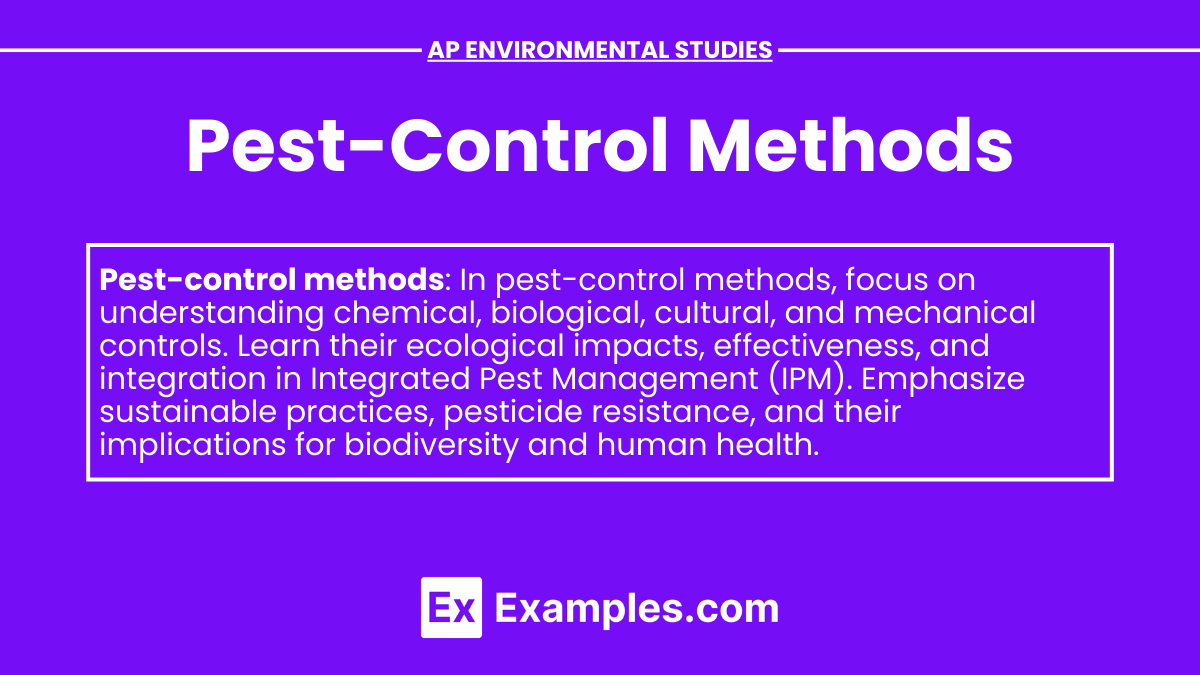Pestwise - An Overview
Pestwise - An Overview
Blog Article
Pestwise for Dummies
Table of ContentsSome Known Factual Statements About Pestwise 6 Easy Facts About Pestwise DescribedAn Unbiased View of PestwisePestwise Can Be Fun For AnyoneSome Ideas on Pestwise You Should KnowThe smart Trick of Pestwise That Nobody is Talking AboutThe Greatest Guide To Pestwise
Q. Define "integrated insect management" (IPM) and checklist a number of possible control techniques that may be used in an IPM approach. A. Integrated bug administration is the combining of appropriate parasite control techniques into a solitary plan to reduce parasites and their damage to an appropriate level. Pest control methods may include: host resistance, organic control, cultural control, mechanical control, hygiene, and chemical (chemical) control.
Get This Report on Pestwise
What can you do to keep the pests you are attempting to control from becoming resistant to the chemicals you use? A. Parasite resistance can be reduced by utilizing incorporated pest management and revolving the sorts of pesticides used.
Bugs are a crucial hazard to the farming company, and integrated bug monitoring assists farmers address and reduce these risks. Integrated insect administration uses numerous approaches in complex, thus being a more reliable solution to the issue. Pest Control Services. Specifically, getting rid of hostile chemical techniques permits for decreasing harm to individuals and the atmosphere by making use of all-natural and more secure alternatives rather
What Does Pestwise Do?
The objective of integrated insect management is to reduce this damage and control acceptable problem degrees rather than remove all unwanted populations. This is why it is important to recognize what actions are warranted in each situation and use hostile ones only when various other integrated management strategies don't work. Integrated monitoring mitigates the adverse repercussions of a non-IPM method, and the main advantages of IPM Advantages of IPM.
A correct understanding of the problem scope determines if the issue ought to be addressed. are the following components of an IPM program since it is important to understand if the microorganisms make prospective threats and choose the incorporated administration choices or the specific chemical usage. mean to reduce invasions by using different agronomic strategies.
The smart Trick of Pestwise That Nobody is Discussing
Integrated administration choices in an IPM program start with much safer to a lot more aggressive ones. The above-mentioned integrated management elements help understand how to prepare and carry out an IPM program step by step: Screen your plants routinely.

To name a few, IPM cultural approaches consist of the following field administration methods: dirt treatment; option of ideal plants; crop turning; interplanting or strip cropping; choice of planting days; weed control; usage of catch plants. Favorable soil conditions accelerate plant growth, and energetic crops are a lot more immune to problems. Commercial Pest Control. In incorporated insect management, dirt testing helps recognize if the area appropriates for the manufacturing of this or that plant, and afterwards use the doing not have nutrients to ensure plant healthy and balanced development
The Definitive Guide for Pestwise
No-till practices aid avoid soil disintegration, contributing to lasting farming. Nevertheless, when tilling is required, it is recommended to perform it in the be up to reveal them to all-natural adversaries and severe climate. Healthy seed startings and seeds predetermine effective crop growth, so it is very important to pick pest-free planting product with strong origins.
Thus, to name a few applications, crop turning can be effectively utilized as an incorporated parasite management technique. Vermin spread out slower if rows of various crop types divide their host plants in intercropping or strip chopping, which is also used in the integrated bug monitoring system. On the other hand, infestations boost when plants of the same crop type or family expand with each other.
, as well as tomatoes. Planting catch plants in patches is another option for IPM intercropping. This integrated parasite monitoring approach suggests drawing in insects to particular plants and then controlling them with chemical or mechanical techniques.
Examine This Report on Pestwise
Barriers are case in points of physical IPM techniques. Allow's take a more detailed check out them. Eliminating or picking parasites out manually is a time and labor-consuming alternative that is commonly applied in incorporated monitoring and chemical-free farming. Fully grown insects or their eggs and larvae are gathered by hand and destroyed.

Division of Plant pop over here Sciences. This incorporated management method suggests an usual means of destroying insects by killers, parasitoids, virus, and various other organic control representatives (aka antagonistic microorganisms). The duty of organic control in IPM is to.
Not known Details About Pestwise
With time, their populace turned out to be a genuine hassle to farmers alongside aboriginal kangaroos or dingoes. The walking cane toad is an additional situation highlighting incorporated organic control failure in this regard when it refused to hunt the target varieties and came to be a pest itself. Parasitoids create on or within their hosts to at some point eliminate them after developing.
Report this page